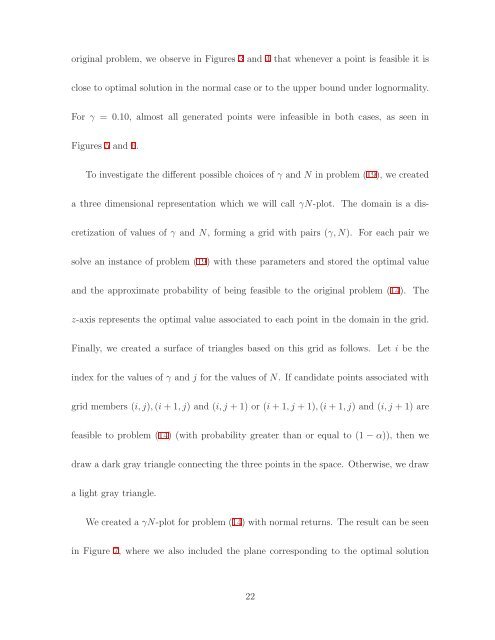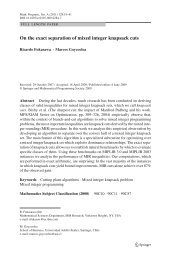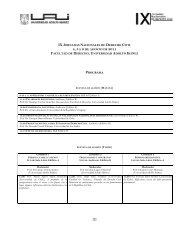Sample Average Approximation Method for Chance Constrained ...
Sample Average Approximation Method for Chance Constrained ...
Sample Average Approximation Method for Chance Constrained ...
- No tags were found...
You also want an ePaper? Increase the reach of your titles
YUMPU automatically turns print PDFs into web optimized ePapers that Google loves.
original problem, we observe in Figures 3 and 4 that whenever a point is feasible it isclose to optimal solution in the normal case or to the upper bound under lognormality.For γ = 0.10, almost all generated points were infeasible in both cases, as seen inFigures 5 and 6.To investigate the different possible choices of γ and N in problem (19), we createda three dimensional representation which we will call γN-plot. The domain is a discretizationof values of γ and N, <strong>for</strong>ming a grid with pairs (γ, N). For each pair wesolve an instance of problem (19) with these parameters and stored the optimal valueand the approximate probability of being feasible to the original problem (14). Thez-axis represents the optimal value associated to each point in the domain in the grid.Finally, we created a surface of triangles based on this grid as follows. Let i be theindex <strong>for</strong> the values of γ and j <strong>for</strong> the values of N. If candidate points associated withgrid members (i, j), (i + 1, j) and (i, j + 1) or (i + 1, j + 1), (i + 1, j) and (i, j + 1) arefeasible to problem (14) (with probability greater than or equal to (1 − α)), then wedraw a dark gray triangle connecting the three points in the space. Otherwise, we drawa light gray triangle.We created a γN-plot <strong>for</strong> problem (14) with normal returns. The result can be seenin Figure 7, where we also included the plane corresponding to the optimal solution22
















